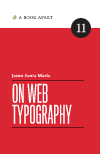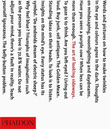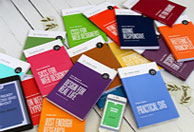The Space Between the Notes
All signs are pointing to a revamp of iOS being announced at Apple’s WWDC next week, and with it, a lot of speculation around what it might look like.
Will iOS 7 be flat instead of skeuomorphic? Can Apple innovate with software as they’ve done with hardware? Sure, why not, but maybe we’re not asking the right questions. An interface has less to do with what it looks like and more with what it feels like in use (with a nod to Mr. Jobs).
The bright side of skeuomorphism
If skeuomorphism has a bright side, it’s that an interface can take advantage of a user’s existing knowledge. A calendar that looks like a literal calendar—rather than an interface for calendar-like functions—can set users into a familiar mode. The interface needs no time to explain what it does, and the user can get on with the task at hand.
This kind of familiarity may sound like an unnecessary crutch, but remember: it wasn’t that long ago that the idea of an adaptable interface under glass was new to all of us. For folks who aren’t as savvy with technology, the familiarity provided by skeuomorphism can mean more than you know. Of course, as with all things, there needs to be a balance. Apple’s iOS has veered so heavily into skeuomorphism that it often detracts from the experience, and amounts to over-decoration: stitching, leather, torn pages. Blech.
After looking at more heavy-handed skeuomorphic design choices like that, it’s tempting to see “flat” design as a natural counterpoint. But so-called flat design is not the opposite of skeuomorphism—they aren’t even on the same spectrum. That’s because this flat movement isn’t an approach for designing interactions, but aesthetic veneers. Calling someone’s design style “flat” is like saying a musician’s style is “loud.”
And veneer is a good thing! It’s what stuff looks like and aids in the way we perceive an interface. But don’t mistake a flat design for just designing minimally to create the most clear interface possible, which should be the goal for most any design. A good interface can be flat, 3D, photographic, invisible, or anything in between.
Instead, skeuomorphism is a mode of design and a metaphor for function. It’s a spectrum, not a binary between being either “skeuomorphic” or “not skeuomorphic.” This is helpful, since interface design is rarely about black-or-white scenarios. Good interfaces blend the most useful and appropriate pieces along the spectrum, allowing users to build on the familiarity they have with other objects and experiences. It’s absolutely true that minimalist designs can declutter interfaces, which can help solve some interaction and usability problems. But the lack of clutter itself is not the innovation; it’s still the veneer. If innovation does happen, it’s usually in the ideas, language, and interactions that lie beneath that exterior.
The myth of innovation
The word “innovation” gets thrown around so much one might think it’s as easy as applying enough elbow grease. The mere notion of innovation has become some sort of arms race in wowing people with newness. This might be a straw man for our attention-mongering culture, but it’s far from reality. If you think innovation happens by continually introducing things no one has ever seen or dreamed of before, you would make a poor product lead.
What people sometimes mean when they say innovation is actually iteration—continually building on good thinking and assumptions, then, most importantly, believing in the equity of those decisions enough to keep revising upon them. This more pragmatic approach doesn’t get much love, sadly. Maybe that’s because when you break down the stepping stones of iteration, they look and sound decidedly less sexy than a new shiny thing.
How can we be so blind to the fact that companies like Apple have been succeeding because of careful, patient iteration for many years? That they have never really worked in leaps and bounds, but increments? Good ideas don’t pop out of someone’s head pure and fully-formed. They get that way by being tested, questioned, beaten down, and rebuilt. Real innovation means thinking around a problem from a different point of view. Trying to be innovative, just like trying to be cool, usually fails.
Growing up
iOS needs to mature to continue to innovate. When that happens, it probably won’t look entirely new, just like another small step forward. It won’t be flashy, and pundits will cry fail, but that’s also how you’ll know Apple is doing something right.
I want iOS to grow up. I want it to act like it’s been around for 6 years and that it knows the score. Iteration like this can reduce the need for skeuomorphism; when people become more familiar with an interface, it can be pared down aesthetically over time. Not necessarily flat, just less.
But the most important issues aren’t in the aesthetics. For instance, I rarely find myself monotasking with my phone or iPad. I’m looking something up, taking notes, and composing an email. Or retrieving login credentials from 1Password and then jumping over to a browser to sign in (after having already been there to get a login screen before jumping to 1Password). These days, doing anything on my phone isn’t measured by what an app does, but by the space in time I’m navigating between apps—the moments of transition between doing something and doing something else. Over the years, getting to the task at hand, wherever I am, has become the most frequent point of frustration with using a gadget. The app switcher bar in iOS is a bandage that’s well past its usefullness. iOS needs a more elegant way for users to flow from one app to the next to achieve one task.
Claude Debussy said that “music is the space between the notes,” and good interaction design shapes the space between tasks. It’s not as simple as just saying iOS needs “multitasking.” The OS should feel more like an environment for stuff to nebulously happen where and when it’s desired, rather than a series of isolated cells knocking out morse code between the walls.
I don’t know what the solution looks like. Thankfully, that job goes to Jonathan Ive and his team.





 The Art of Looking Sideways
The Art of Looking Sideways
